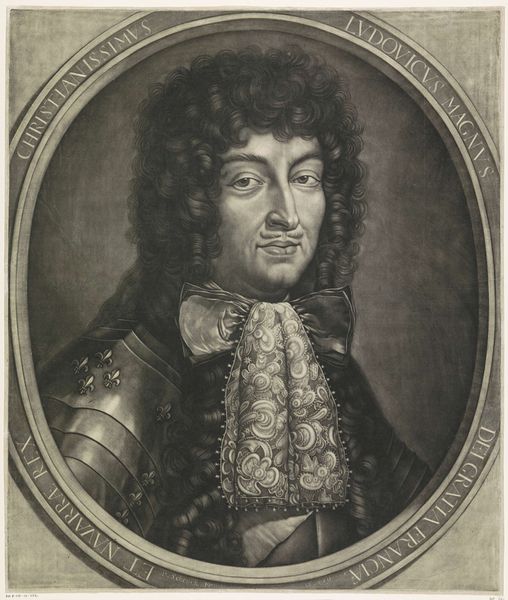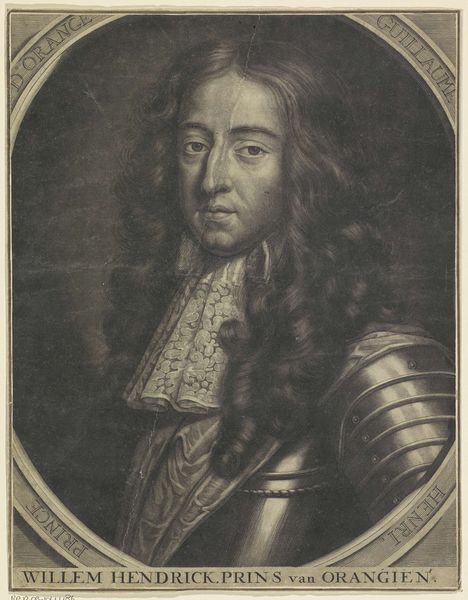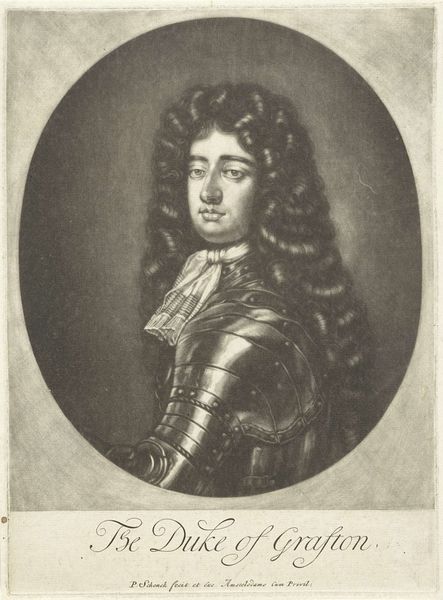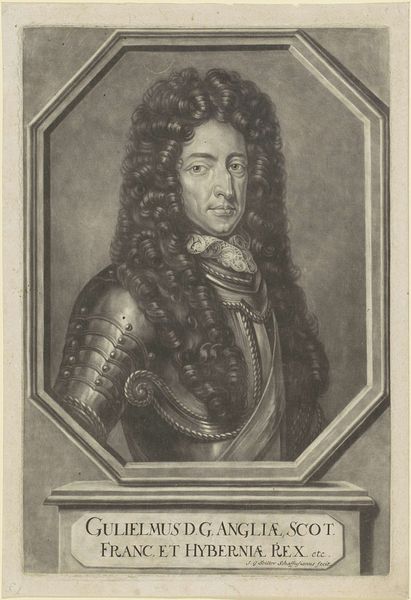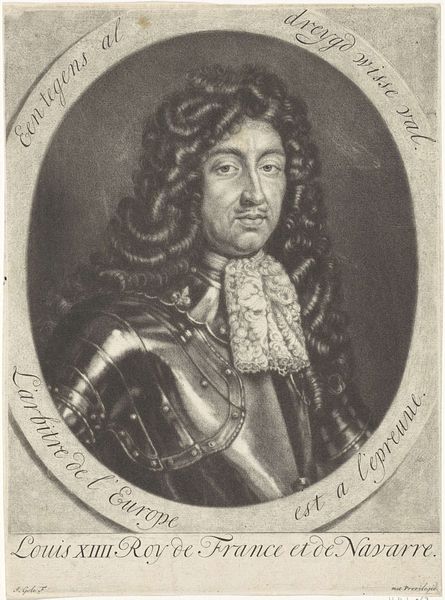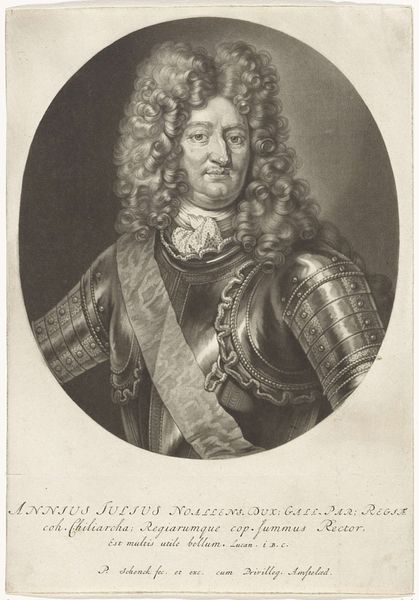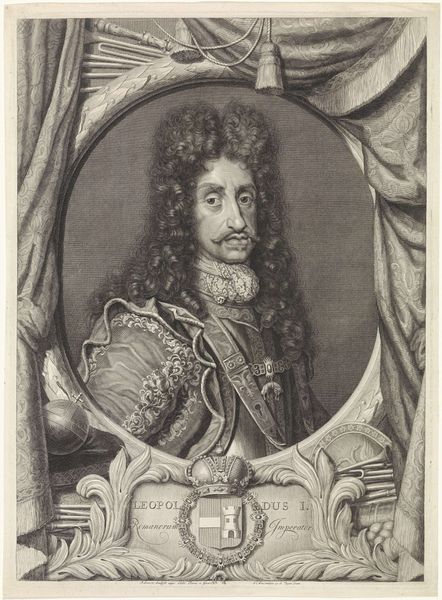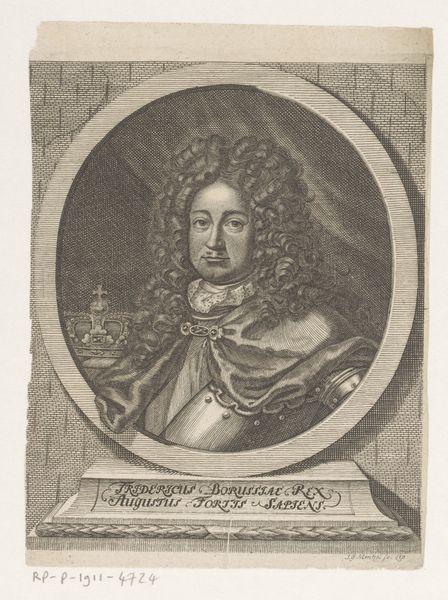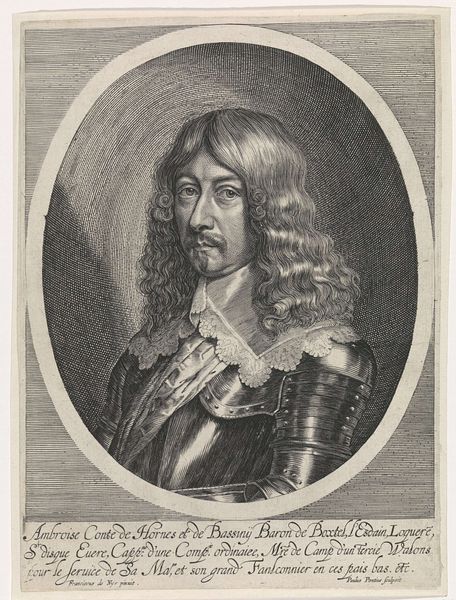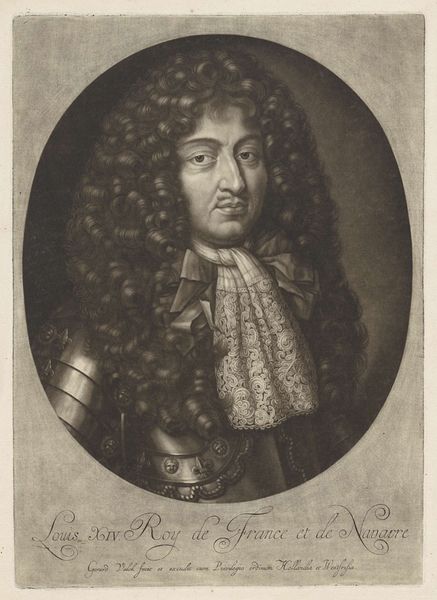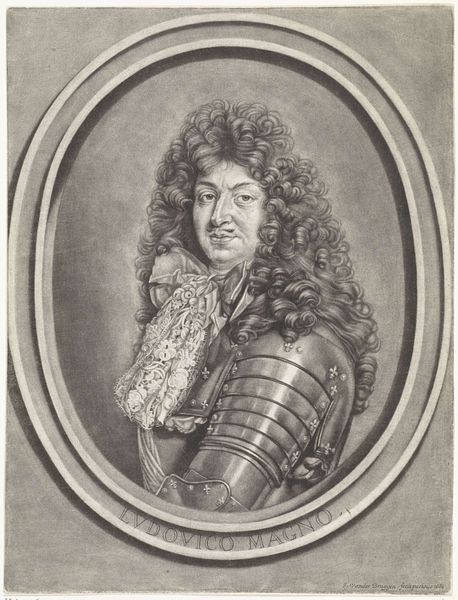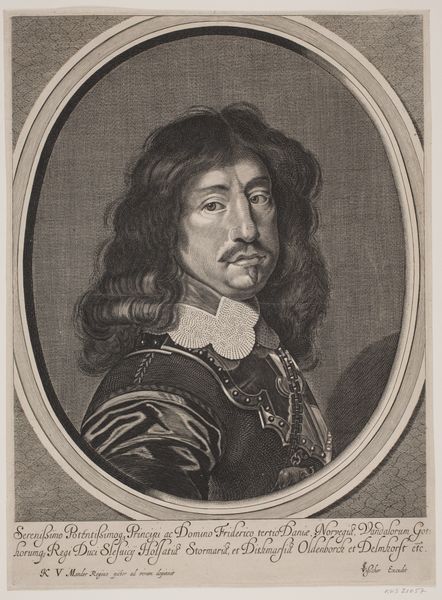
engraving
#
portrait
#
baroque
#
history-painting
#
engraving
Dimensions: height 273 mm, width 174 mm
Copyright: Rijks Museum: Open Domain
Curator: Let’s delve into this commanding portrayal. What strikes you first about it? Editor: The overwhelming theatricality! It’s impossible to ignore that cascade of curls, or the sheer weightiness conveyed by the armour. There's something performative, even constructed, about the image itself. Curator: You've picked up on the essence of Baroque representation. This engraving by Pieter Schenk, likely created sometime between 1670 and 1713, is entitled "Portret van Lodewijk XIV, koning van Frankrijk"—Portrait of Louis XIV, King of France. Considering Louis XIV’s historical positioning, the staging feels purposeful, wouldn't you agree? The absolute monarch as a brand, carefully managed through visuals like this. Editor: Absolutely. Notice how the armour is practically overflowing into the frame, as though the very instruments of power can barely contain the king’s persona. Even in an engraving, the material presence dominates. What does the choice of armour signify, beyond straightforward strength? Curator: It signals, perhaps ironically, a connection to the past—to a tradition of royal might rooted in martial prowess. At the same time, by the time this portrait was likely made, the power of the monarchy was arguably maintained more through its court at Versailles than on the battlefield. It’s a clever layering of signifiers. The very conscious building of the Sun King mythology! It is Baroque aesthetic, but beyond that, it reflects specific contemporary ideologies of governance and self-representation, positioning Louis as central to French, and arguably, European identity. Editor: Yes, there’s such deliberate manipulation of symbolism here; Schenk invites the audience to interpret, and, by interpreting, participate in the cultural mythmaking around Louis XIV. A canny propaganda exercise packaged within portraiture. And look—even in this medium, you can practically sense how it was carefully intended to broadcast power through repeatable, reproducible imagery. It shows the dawn of the age of reproducible image and propaganda, but still so beautifully ornamented! Curator: Precisely! It shows how images act as active agents of cultural memory. This image makes me think about the narratives we keep alive—who is included, who is erased, and what are the cultural implications. Editor: And on that note, perhaps it prompts us to examine the symbols we are still crafting today…
Comments
No comments
Be the first to comment and join the conversation on the ultimate creative platform.
